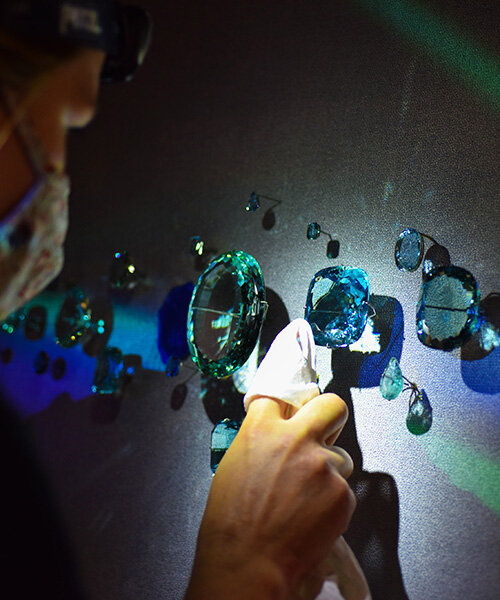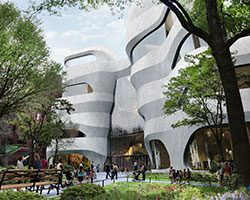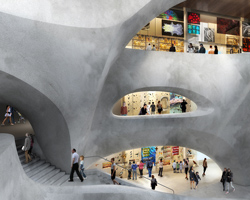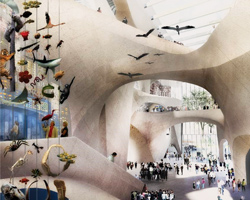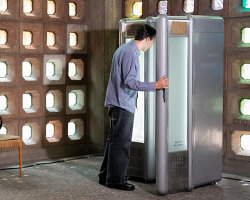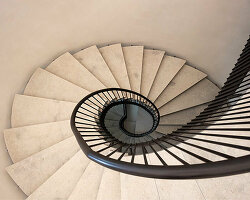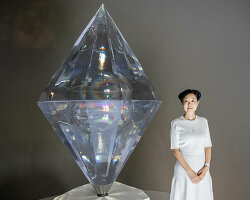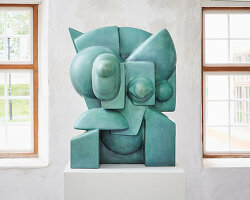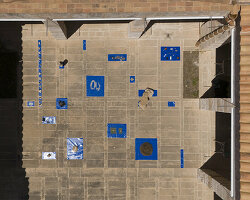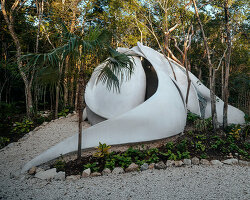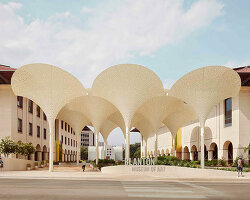one of the most beloved spaces in new york city’s museums returns to public view with the opening of the completely redesigned and reinstalled allison and roberto mignone halls of gems and minerals at the american museum of natural history (AMNH). the 11,000-square-foot spaces present a sparkling showcase for the museum’s world-renowned collection, and an engaging guide to scientific knowledge. the halls’ exhibits boast a gallery of dazzling gems, including the legendary 563-carat star of india sapphire, fascinating new specimens, such as a pair of towering, sparkling amethyst geodes that are among the world’s largest on display, interactive displays illustrating the science of mineralogy, and a temporary exhibition space, which opens with beautiful creatures — an unprecedented display of exquisite historic and contemporary jewelry inspired by animals.
‘when we open people’s eyes to new ideas and understanding when they’re inside the museum, they take all of that out into the world,’ lauri halderman, vice president for exhibition at AMNH tells designboom. ‘I think then people can look around and see things they perhaps didn’t notice before, or they see things in a new light.’
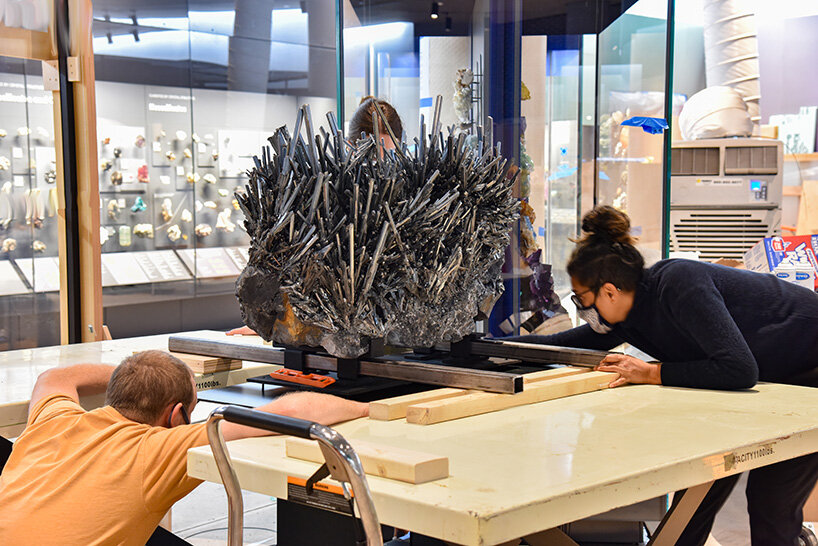
the installation of a stibnite specimen, which weighs almost half a ton
image by d. finnin / ©AMNH (also main image)
the halls have been designed by ralph appelbaum associates with davis brody bond as architects, together with the american museum of natural history’s exhibition department under the direction of lauri halderman. the three main divisions of the layout are the gem hall, the mineral hall, and the melissa and keith meister gallery for temporary exhibitions. the gem hall features a display of nearly 2,500 objects from the museum’s collection, including precious stones, carvings, and stunning jewelry from around the world. specimens on view include the delong star ruby, a 100.3-carat ruby from myanmar; the brazilian princess topaz, a 221-facet, 9.5-pound pale blue topaz, which was once the largest cut gem in the world; and a carving of the buddhist deity guan yin in lavender jadeite jade, fashioned in china during the late qing dynasty.
meanwhile, the mineral hall comprises four sections: mineral forming environments is a set of cases dedicated to the environments and processes by which minerals form. at the four corners, mineral fundamentals explores the concepts of mineral sciences, including how they have been used by humans from prehistory to the present day. systematic classification contains 659 specimens that represent the chemical classification system that scientists use to organize earth’s more than 5,500 mineral species, as well as an interactive feature for visitors to explore elements on the periodic table. finally, minerals & light explores the optical properties of minerals and their interaction with light.
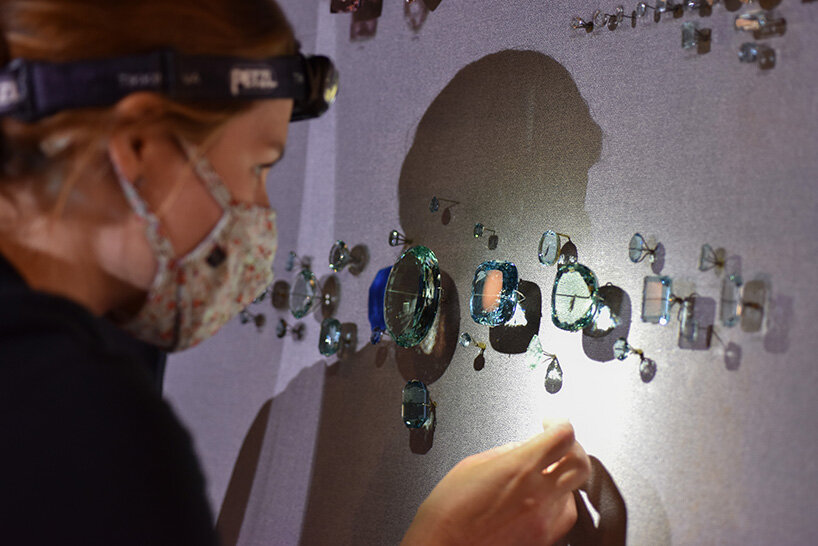
exhibition staff members install specimens in the all-new allison and roberto mignone halls of gems and minerals
image by d. finnin / ©AMNH
inaugurating the melissa and keith meister gallery is beautiful creatures, a display of some of the world’s most spectacular jewelry pieces inspired by animal forms. curated by jewelry historian marion fasel, the special exhibition will be on view at AMNH through september 19, and features imaginative designs by the world’s great jewelry houses and artisans. ranging from the mid-19th century to the present, highlights include cartier’s iconic panthers and suzanne belperron’s butterflies, with sparkling pieces displayed in categories of air, water, and land animals.
on the occassion of the opening of the redesigned allison and roberto mignone halls of gems and minerals, designboom spoke with lauri halderman, vice president for exhibition at AMNH.
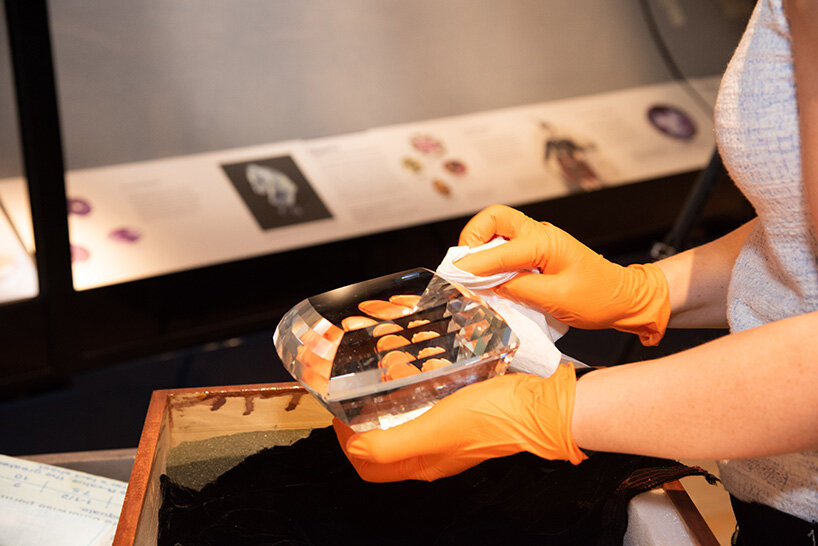
image by d. finnin / ©AMNH
designboom (DB): why was now the time to redesign and reinstall the allison and roberto mignone halls of gems and minerals, and what was the intention behind the renovation?
lauri halderman (LH): over the past several decades, much has changed! the museum has greatly expanded its collection of minerals and gems, including acquiring some spectacular large specimens specifically for the new halls — we wanted to showcase many great new specimens. the science has evolved, including giving us a new understanding of the evolution of minerals on earth. our ways of thinking about how to communicate science have advanced, with new knowledge about how people learn in both formal and informal education settings. finally, the older hall was showing signs of age, with generations of enthusiastic visitors creating wear and tear in the gallery.
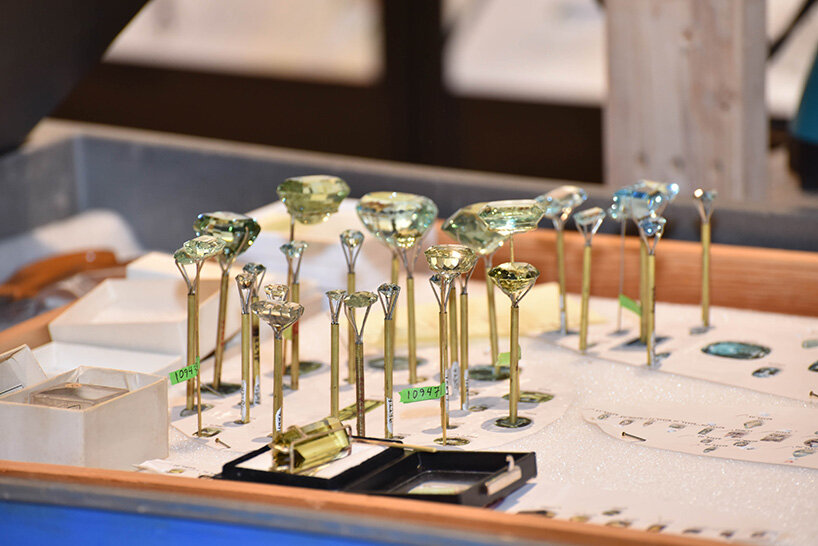
image by d. finnin / ©AMNH
DB: what are some of the features of the spatial organization and exhibition design by ralph appelbaum associates with davis brody bond that enhance visitor experience?
LH: architecturally speaking, this was a clean sweep. the ramps, stairs, carpets and dropped ceiling were removed as well as all the old casework, so we took the gallery down to its bones — and we were happy to see once again what good bones it has! we wanted to preserve that openness. the space now feels much larger, as you have a vista from one end to the other, and it’s a clean approach without unnecessary stairs and other ways to change the elevation.
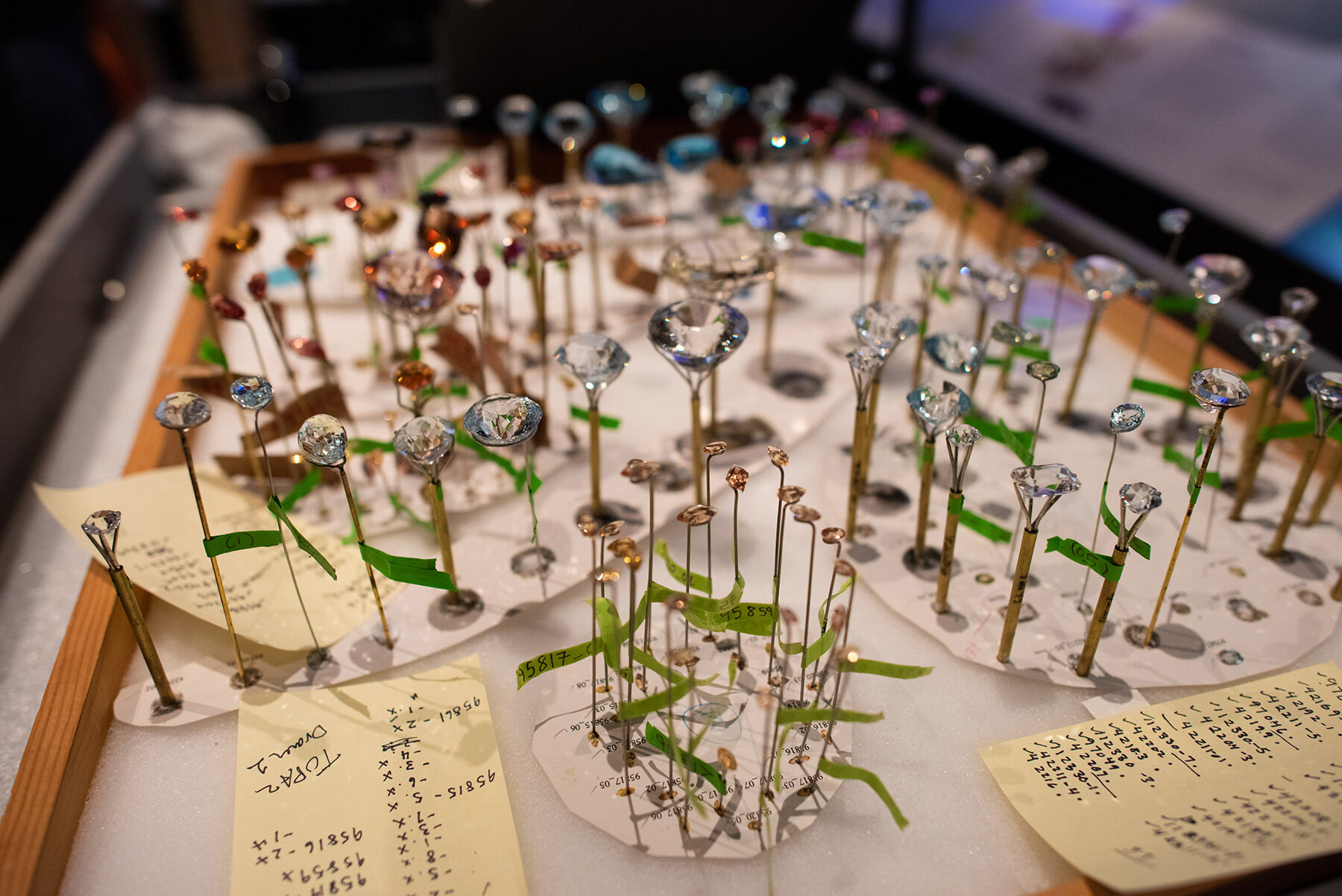
image by d. finnin / ©AMNH
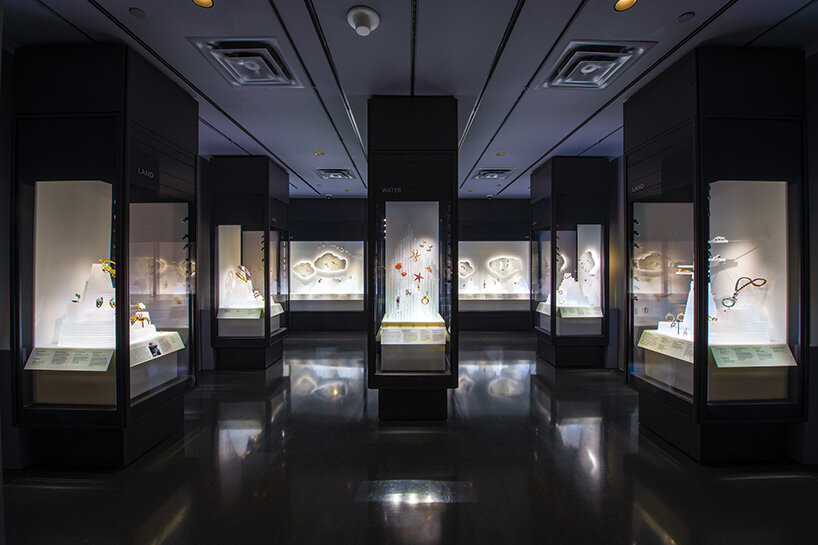
beautiful creatures is an exhibition of some of the world’s most spectacular jewelry inspired by animals
image by d. finnin / ©AMNH
DB: how do the halls’ exhibits unfold across the AMNH spaces, and what are some of the highlights visitors can look forward to?
LH: ah, there are so many highlights! we have fantastic new signature specimens throughout the hall, from the pair of amethyst geodes that greets you at the entrance to the jaw-dropping tourmaline at the north end; that north wall will open up and connect you through to the museum’s new richard gilder center for science, education and innovation when construction is completed. we have a gorgeous new gem hall, where you are surrounded by gems on three sides and can admire some AMNH favorites like the star of india sapphire in the center. a new gallery on minerals and light has an enormous fluorescent slab from sterling hill mine in new jersey, and it’s surrounded by exhibits helping you understand the fascinating interplay of minerals and light. a central, large media piece gives you a chance to explore the periodic table and we also have media and exhibits that focus on the basics, like, just what is a mineral, anyway?
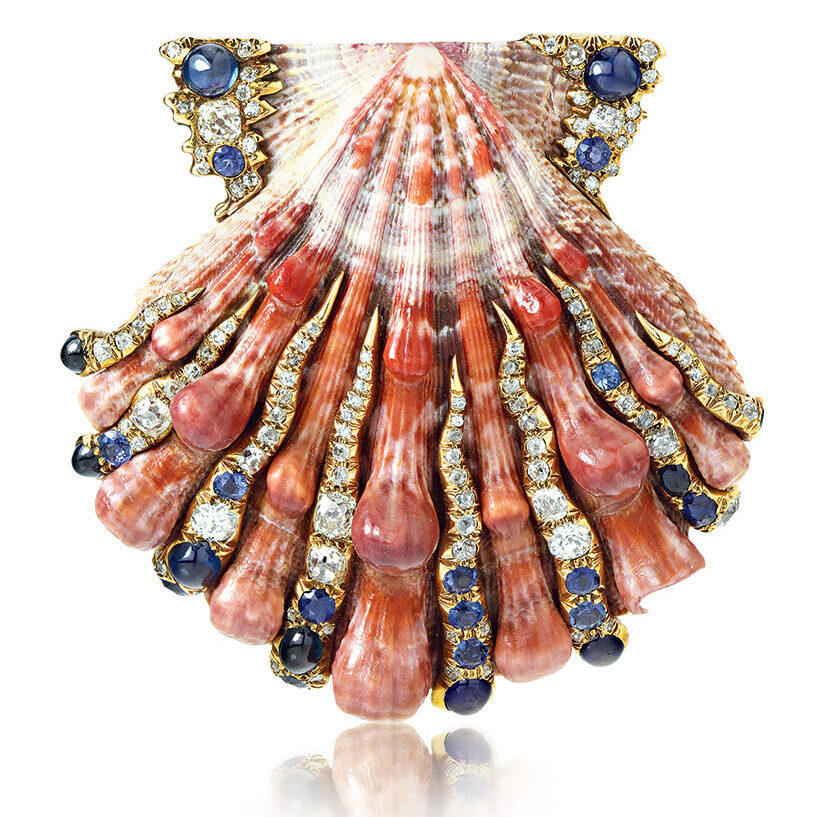
lion’s paw shell brooch – two of verdura lion’s paw shell brooches, made from lion’s paw scallops purchased by the italian designer duke fulco di verdura in the museum’s gift shop in 1940, are on display in beautiful creatures, including this one | image courtesy of stephen webster
DB: can you introduce the inaugural temporary exhibition, beautiful creatures, and how the idea of animal-themed jewelry designs was developed?
LH: we’re so excited to have our new melissa and keith meister gallery for special changing exhibits! it’s our first AMNH permanent hall that includes a temporary gallery. our inaugural show is beautiful creatures: jewelry inspired by the animal kingdom, organized by the incomparable jewelry author and expert marion fasel. she brought us the idea of animal-themed jewelry and we knew instantly that it was perfect for our museum. the 100-plus pieces of jewelry she selected for the show span 150 years, since the museum just had its 150th anniversary, and there are some truly exceptional pieces created by the world’s great jewelry houses and artisans. our AMNH exhibition department designers came up with a very original design for these displays that I love for its glowing white sophisticated style. beautiful creatures is only open until mid-september so don’t miss it!
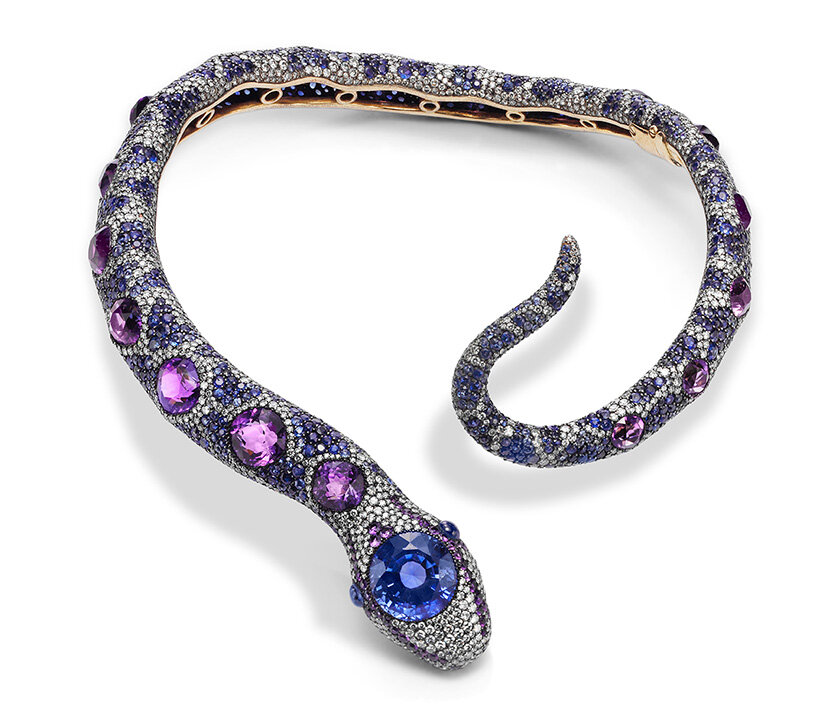
serpent choker — american designer joel arthur rosenthal has created only a few snake necklaces. this one, made in 1990, features JAR’s signature blend of pavé-set precious and semiprecious stones (sapphires, amethysts, and diamonds) in a silver and gold setting | image courtesy of FD gallery
DB: what do you think makes the halls of gems and minerals so beloved to this day, and what do you hope visitors to come away with following their visit?
LH: people are willing to make the effort to leave their homes and come out to museums to see wondrous objects and displays that they can’t see every day anywhere else. they come with expectations that they will be engaged, and even entertained, but also educated — museums offer something quite different than theme parks — and we work hard to deliver on all of those fronts. museum going is also often a social experience, something you can do with your family or friends, and that seems increasingly valuable after this pandemic year of isolation.
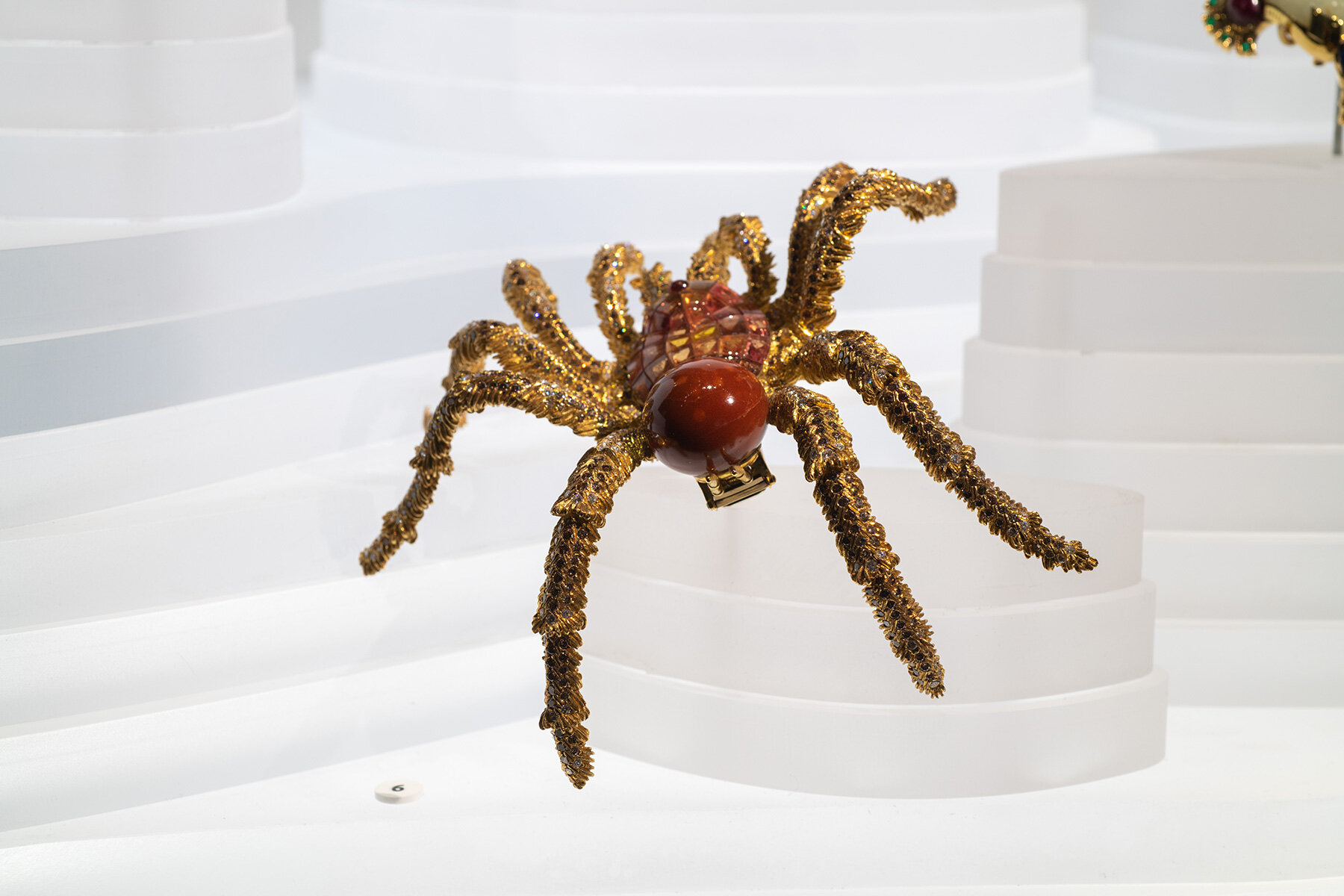
tarantula brooch — this tarantula brooch was part of a series of animal-themed jewels created by the family-owned german firm hemmerle between 1979 and 1996. the natural 111.76-carat brown horse conch pearl in the rear segment of the tarantula is believed to be one of, if not the, largest natural horse conch pearls in the world | image by d. finnin / ©AMNH
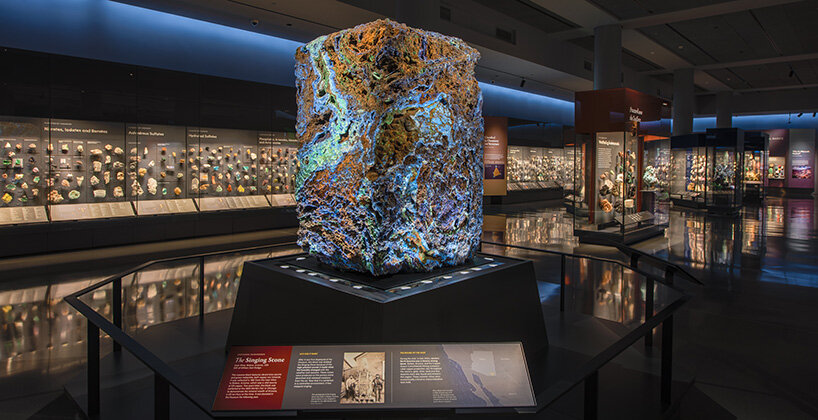
azurite malachite (‘the singing stone’) —known as the singing stone, this massive block of vibrant blue azurite and green malachite from arizona was first exhibited at the 1893 world’s columbian exposition in chicago. after it was first displayed at the museum, this block was dubbed the singing stone because of the high-pitched sounds it made when the humidity changed with the weather and seasons. now that it is exhibited in a controlled environment, it has stopped singing | image by d. finnin / ©AMNH
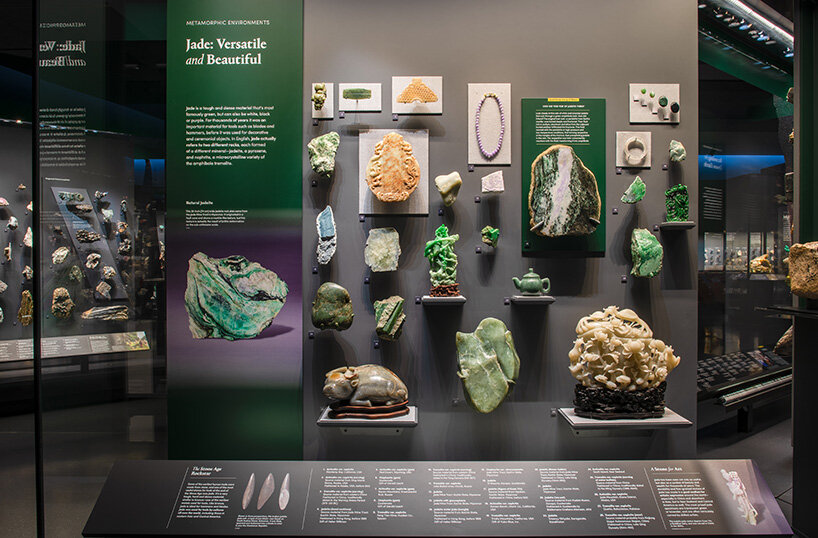
this case displays various specimens of jade, a tough and dense material that’s most famously green, but can also be white, black, or purple | image by d. finnin / ©AMNH
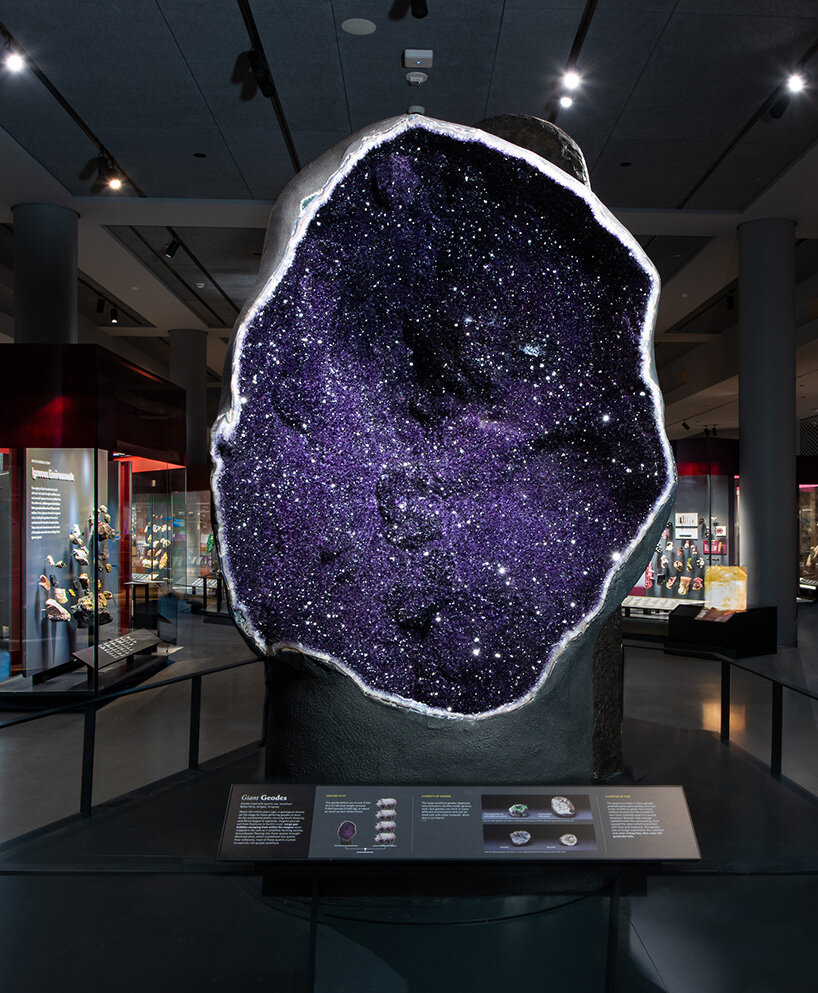
the entrance to the new galleries features a pair of towering amethyst geodes that are among the world’s largest on display. the amethyst geode pictured here stands 9 feet-tall, weighs around 12,000 pounds (5,440 kg) and was collected from the bolsa mine in uruguay | image by d. finnin / ©AMNH
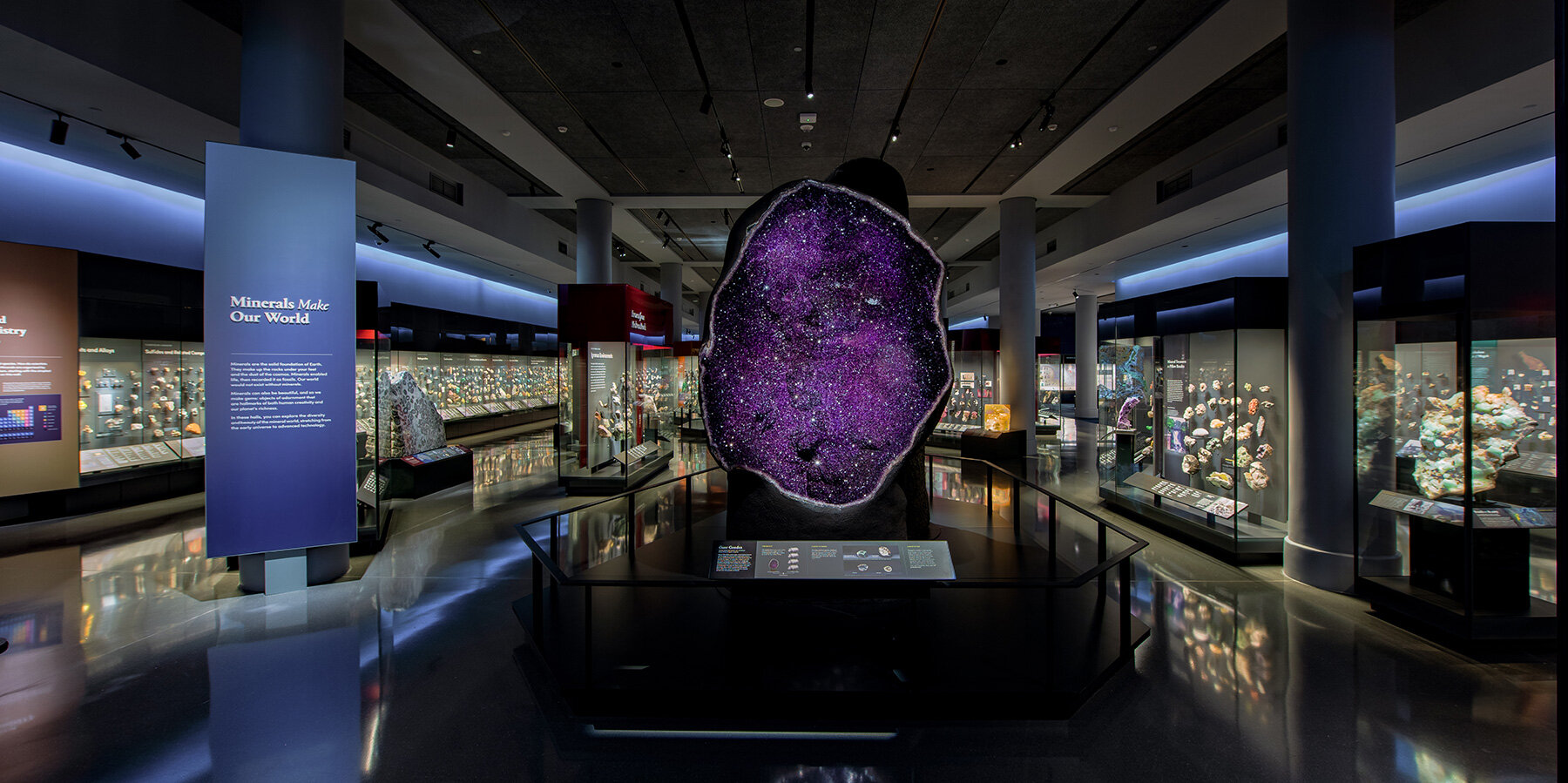
the entrance to the all-new allison and roberto mignone halls of gems and minerals at the AMNH is a sparkling showcase for the museum’s world-renowned collection and an engaging guide to current scientific knowledge about our dynamic planet. the redesigned halls feature more than 5,000 specimens sourced from 98 countries | image by d. finnin / ©AMNH
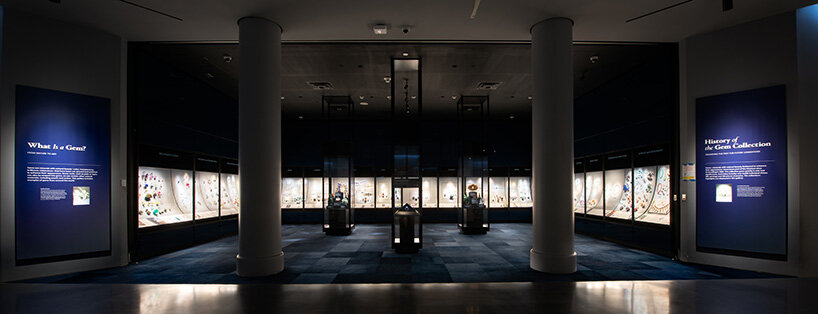
the gems hall in the allison and roberto mignone halls of gems and minerals at the AMNH displays nearly 2,500 objects, including precious stones, carvings, and stunning jewelry from around the world that were fashioned from naturally beautiful minerals | image by d. finnin / ©AMNH
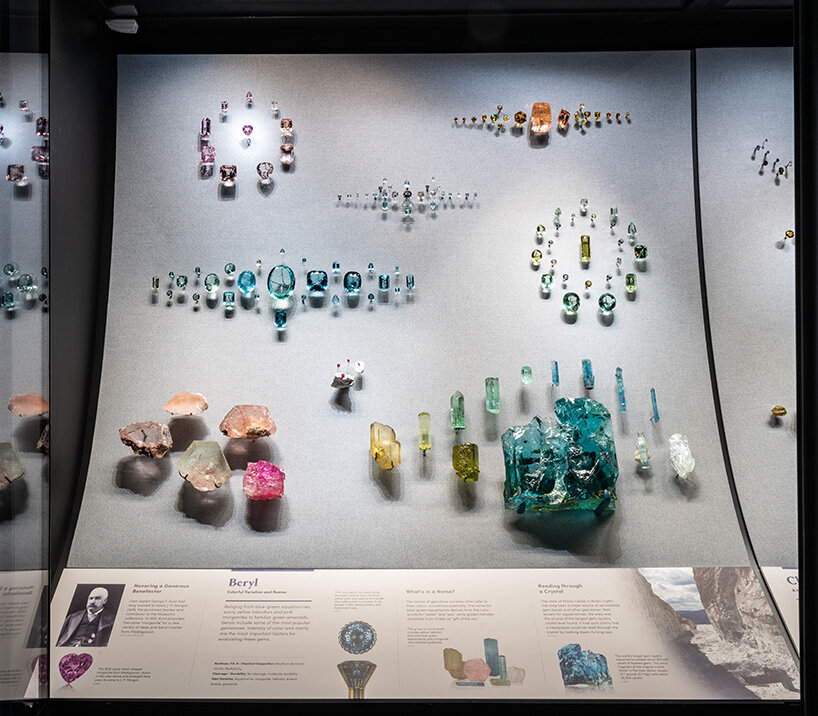
ranging from blue-green aquamarines, sunny yellow heliodors, and pink morganites to familiar green emeralds, beryls include some of the most popular gemstones | image by d. finnin / ©AMNH
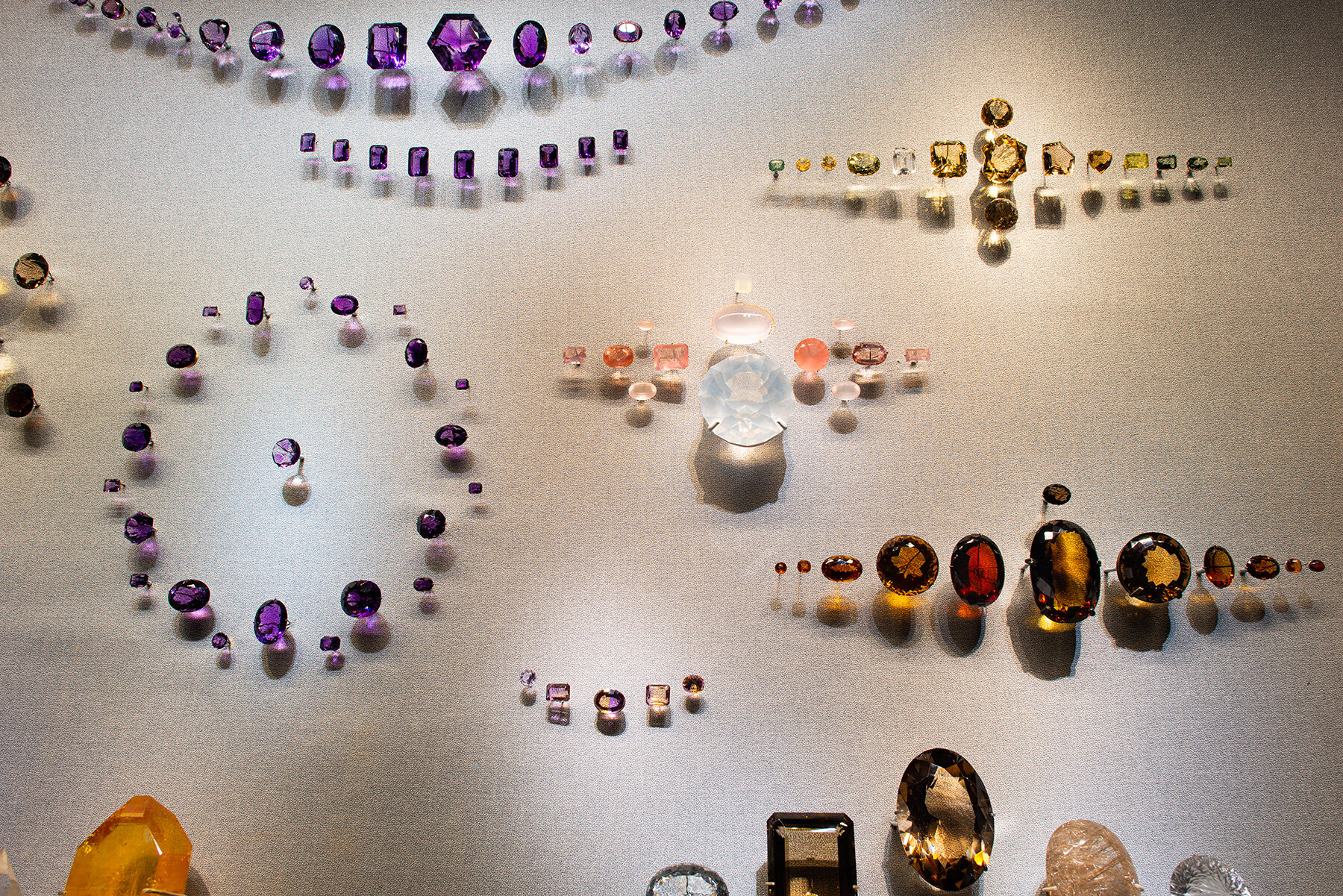
abundant in earth’s crust, quartz is found in many environments. the gem forms of quartz that occur as crystals can be of various colors and hues or colorless, as in rock crystal. the colors derive mainly from natural radiation, heat, and trace contaminants | image by d. finnin / ©AMNH
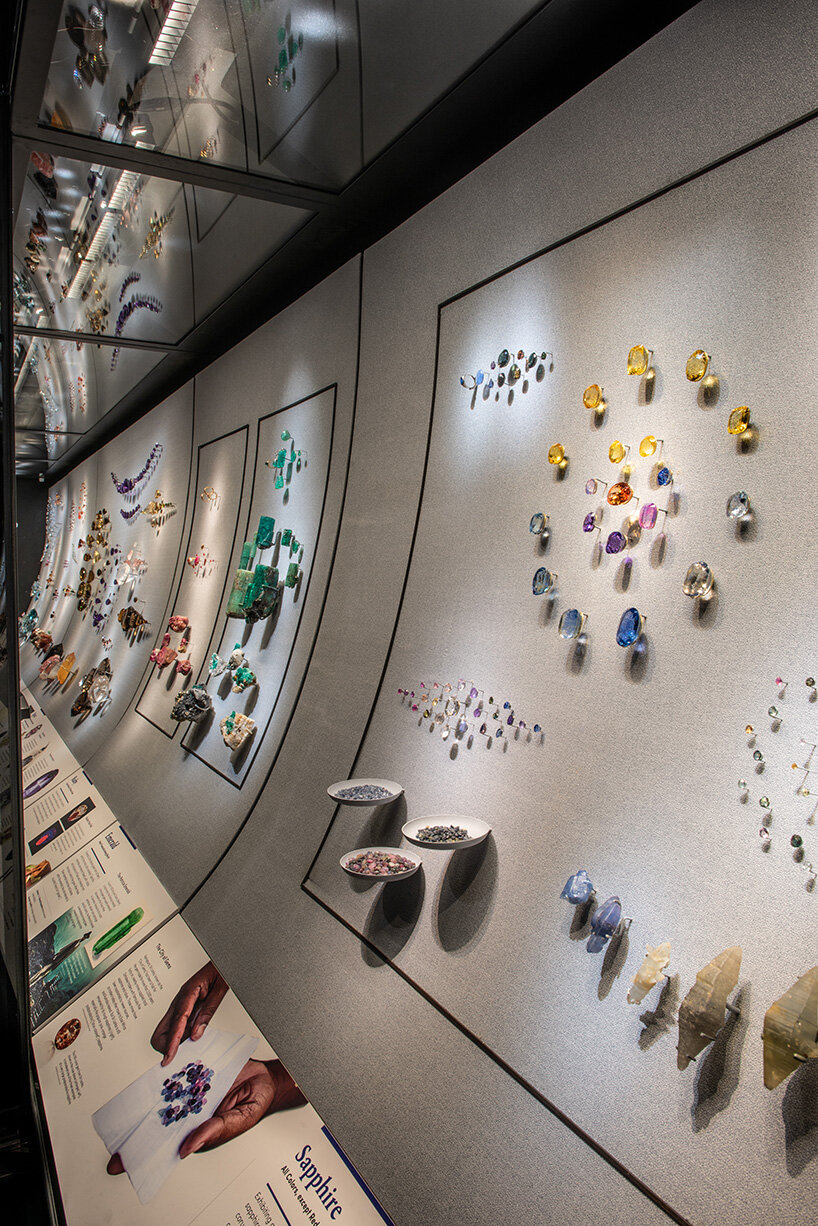
image by d. finnin / ©AMNH
american museum of natural history (AMNH) (5)
art interviews (138)
exhibition design (589)
museums and galleries (677)
PRODUCT LIBRARY
a diverse digital database that acts as a valuable guide in gaining insight and information about a product directly from the manufacturer, and serves as a rich reference point in developing a project or scheme.
